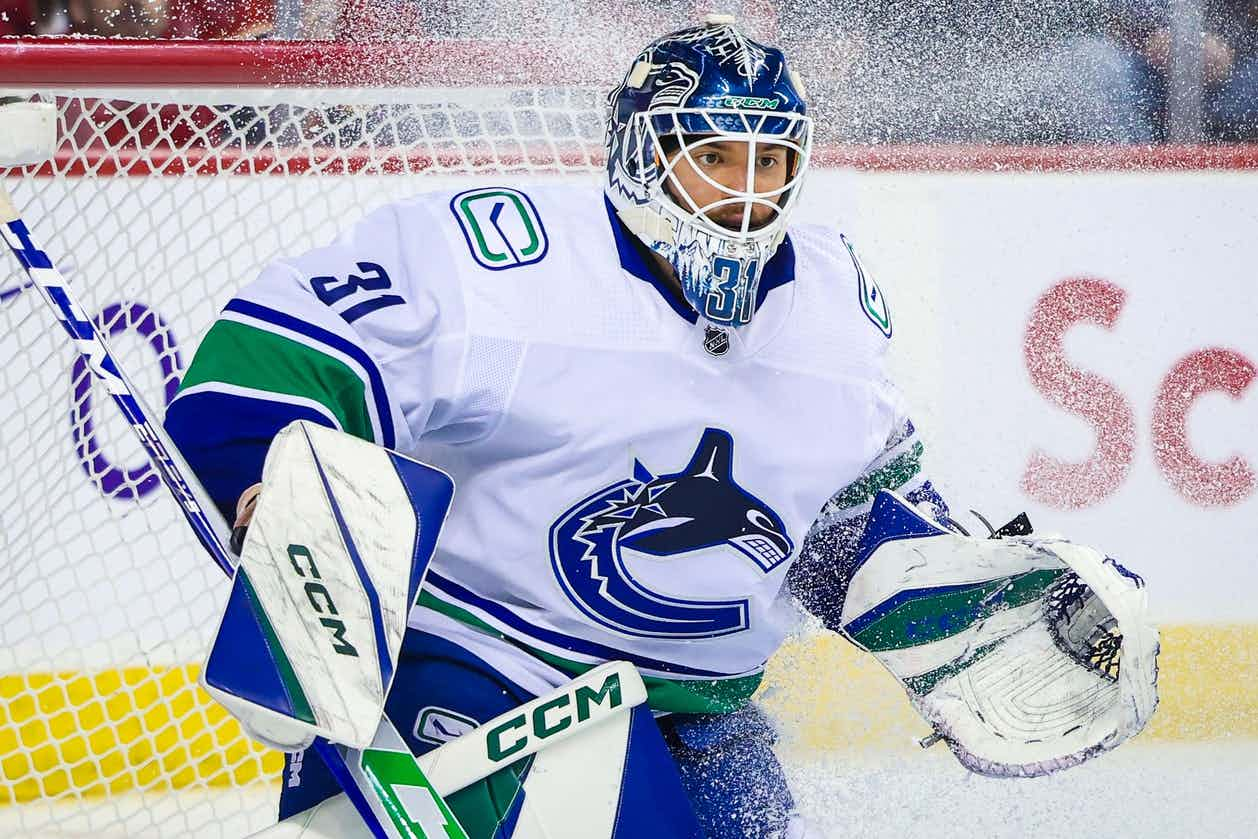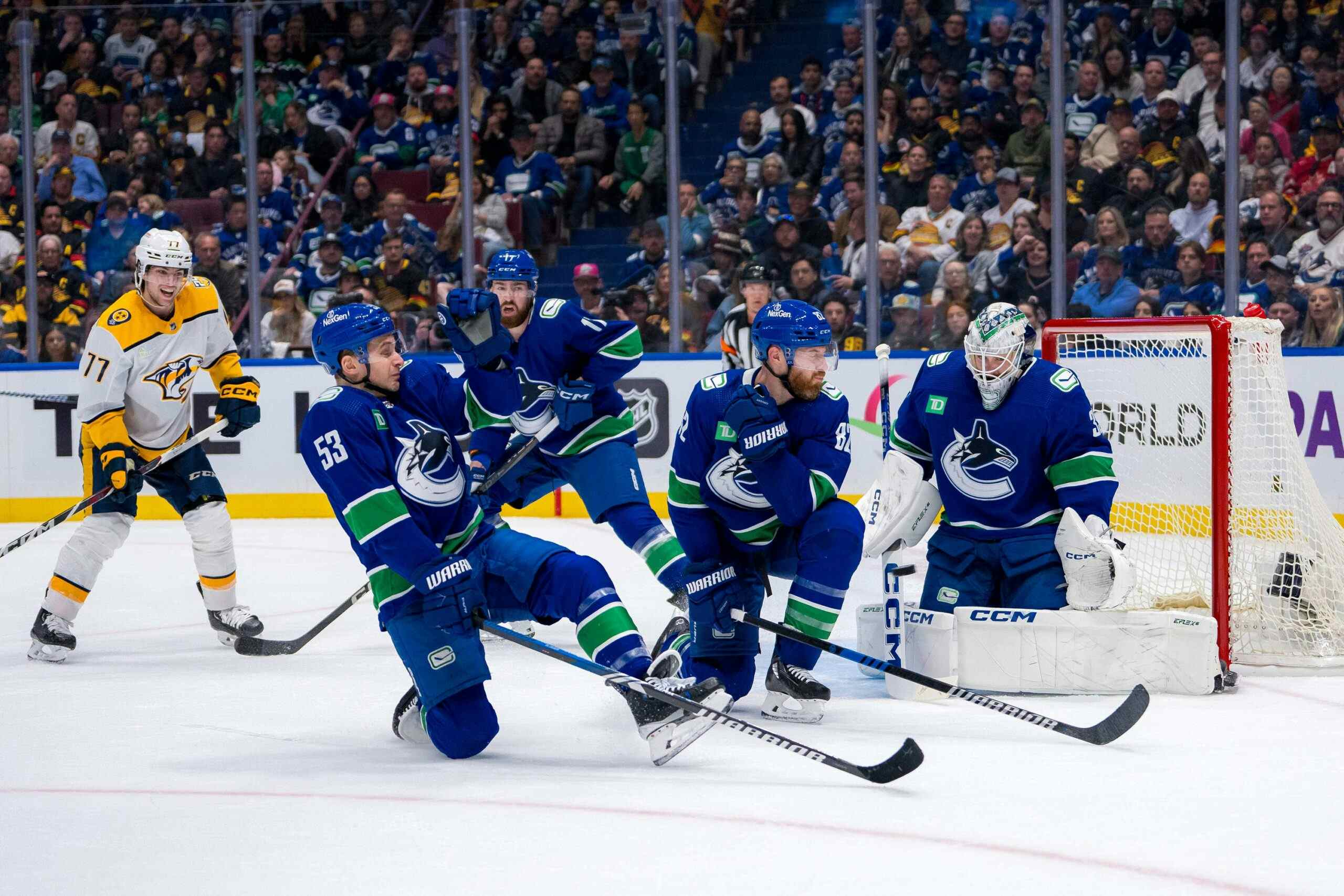Who Should Vancouver Draft? Spoiler: It’s Sam Reinhart
By Rhys Jessop
9 years ago
For a lot of Canucks fans, this is their first rodeo going in to the NHL entry draft with a high 1st round pick, and certainly the first time this has happened in the Twitter era. We’re all a little excited. Unsure at what to make of this whole mess, but excited. What makes it all the more exciting is that a local kid – Vancouver’s own Sam Reinhart – is projected to be one of the top prospects of this year’s draft class, and according to Ben Kuzma, Jim Benning may be willing to move the 6th overall pick along with Bo Horvat to Florida for the 1st overall selection and the chance to draft him.
But hey, a rumour is just that: a rumour. This probably isn’t going to happen (especially if you believe what Benning said to Mark Spector recently). As professional fans of an awful team, the guys at The Leafs Nation have gone through this “trade up for 1st overall!” hysteria before; nearly every year in fact. Unsurprisingly, nothing really ever comes of this talk, and we all get excited for nothing.
But what if…
What if Jim Benning really is out to make a big splash and land Reinhart? What if Vancouver is willing to part with their two highest draft picks since 1999 to make it happen? What if Florida goes for it? Is Sam Reinhart really that good? Is parting with Horvat and another top-10 draft pick really worth it? Should Vancouver do this deal if it’s presented? Read past the jump to find out.
The Value Of A 1st Round Draft Pick
The thing about the entry draft is that talent is not distributed in a linear fashion. That is to say that each prospect is not just a little worse than the guy before him. Instead, talent tends to decline exponentially from the 1st overall pick onwards, and draft picks in the 5-10 range tend to be closer in value to 3rd round picks than they are to guys taken just 2 or 3 picks ahead of them:

The above graph, courtesy of Matt Pfeffer’s Draft Book available on Hockey Prospectus. It measures player contributions in GVT (Goals Versus Threshold), which is essentially a hockey version of baseball’s WAR. GVT measures a given player’s contribution in goal differential contributed above a replacement level player (ie: one freely available on the open market. Guys like Zac Dalpe, Tom Sestito, Andrew Ebbett, etc.), but it’s not commonly used due to the fact that most of the time, we’re trying to predict how a player will perform in season n+1 by looking at how he did in season n. GVT uses goals, which we all know are noisy on a season-by-season level, so it’s usefulness is generally limited by sample size issues. When looking at the scope of a career however, most of these issues should wash out, leaving us with a good measure of career-long player value.
With all that aside, we can look at who we can expect to win a trade for draft picks/prospects based on draft position and how each player at that position performed over their respective NHL career. Using the rumour that Ben Kuzma floated, Vancouver would be trading their 6th overall pick this year along with Bo Horvat (9th overall) to Florida in exchange for the 1st overall pick. Based on average career GVT of forwards since 1990, Here’s how that trade would shake down:


The table on the left shows the average expected values of each pick, while the table on the right shows the average expected values of the next few guys on the board at each selection, to smooth out some of the small sample size quirks.
In both cases, trading Bo Horvat and the 6th overall pick for the 1st selection in this upcoming entry draft is the equivalent of adding another free pick in the 4-10 range, and a deal Vancouver should expect to definitively win in the long run.
Derek Zona of Copper & Blue also takes a look at a similar issue here, but examines the chances of each pick becoming a “top player,” which is a player he defined as scoring 0.5 points per game as a forward (which is mid-tier 2nd line production). He found that draft picks in the 4th-13th turn out to be impact pros 44.5% of the time, while 1st overall picks become top players roughly 86% of the time.
Given those odds, there’s a 50% chance that one of Vancouver’s two current top-10 picks becomes at least an average NHL 2nd liner, and a 30% chance that neither do. By trading Horvat and the 6th pick for 1st overall, the Canucks increase their odds of finding an impact NHL player by nearly 36%.
Of course, all of these numbers are looking at averages and probabilities. They assume average conditions, average drafts, and an average group of prospects. If you listen to experts though, you’ll quickly be told that this draft is pretty underwhelming, especially among the first few picks. If the experts are right and this draft does not have any real star-calibre players, is it still worth trading Horvat and the 6th pick for 1st overall and the chance to draft Bennett or Ekblad or Reinhart? The answer would probably be “no,” but fortunately, there is no reason to really believe that the experts are right.
Sam Reinhart Is Really, Really, Really Good
The argument for not dealing two low-end top-10 picks for the best pick available is that there are no “deserving” #1 prospects this year. As the narrative goes, none of the group of 5 CHLers (Reinhart, Bennett, Ekblad, Draisaitl, and Dal Colle) or Willie Nylander have really done enough to separate themselves from the pack. None have performed at a high enough level or produced enough to warrant a “franchise player” label.
To quote Daniel Wagner of Pass It To Bulis:
“There’s no consensus number one pick or even a two-man race, but instead a top-four group that lacks a true can’t-miss prospect like in previous years. There’s no Nathan MacKinnon, John Tavares, or Steven Stamkos in this draft.”
It’s funny he should mention Tavares, Stamkos, and MacKinnon, because those three guys happen to be some of Sam Reinhart’s closest comparables in terms of 17-year old scoring:

That table shows every forward drafted in the 1st round since 2003 that scored over a point per game in their 17-year old season (a.k.a. their first draft-eligible season), ranked by points per game. Also included are guys who may be taken in the 1st round this season, highlighted in red.
Long in short, Sam Reinhart is keeping elite company. In his draft year, he outscored Steve Stamkos, Nathan MacKinnon, Tyler Seguin, Claude Giroux, and Matt Duchene, and shattered the WHL’s high water mark for scoring rate, held by Ryan Nugent-Hopkins. Other than Sam Gagner (who rode Patrick Kane’s coattails with the London Knights), basically everyone in Reinhart’s range is a legitimate star player in the NHL and a worthy 1st overall pick. It’s not unreasonable to say that Reinhart may be one of the most talented players to come out of the WHL in over a decade.
Not only that, but this 2014 draft looks like it may be one of the deeper ones in recent memory in terms of talented CHL forwards. Nikolaj Ehlers rode shotgun with Jonathan Drouin for part of the year, but he, Leon Draisaitl, Sam Bennett, and Robby Fabbri stack up well in comparison to guys like Nail Yakupov, Claude Giroux, Matt Duchene, Evander Kane, and Eric Staal.
Of course, scoring levels change on a year-by-year basis, and if scoring is up CHL-wide this year compared to years past, we should probably deflate all draft eligible players’ numbers a bit. However, CHL scoring is currently on a comparable to recent years, and doesn’t look to be out of line with average scoring since 1999-2000:

If anything, we should deflate the scoring numbers of guys like Patrick Kane, Bryan Little, and Sam Gagner to bring them back to historical levels. We can do that by dividing the CHL average scoring rate over the time frame we want to look at (2003-2014) by the yearly scoring rate in each respective CHL league, then multiplying this result with a player’s points per game to get an adjusted number. Adjusting for league and era, Sam Reinhart (along with a few 2014 draft eligibles) still comes out looking extremely impressive:

While Bennett and Ekblad and Draisaitl and Ehlers are surely good, Sam Reinhart is in a league with some truly elite NHL talent. It’s also worth noting that Reinhart basically shouldered Kootenay’s offensive burden by himself. The Ice had four 30+ goal scorers in Reinhart and his two linemates Jaedon Descheneau and also draft eligible Luke Philp as well as Tim Bozon, who suffered a life-threatening case of meningitis late in the year and was placed in a coma, ending his season (he has since recovered). Other than that, the Ice did not have a single player score more than 12 goals.
Reinhart was also 3rd in the entire WHL in even strength points, behind only overage New Jersey draft pick Graham Black, and 19-year old Phoenix Coyotes 1st round pick Henrik Samuelsson. He also followed up his impressive regular season with a huge showing in the playoffs, leading all WHL draft-eligible players in scoring and all WHL players in points per game with 23 and 1.76 respectively. In the first round alone, Reinhart outscored fellow top prospect Jake Virtanen an astounding 17 points to Virtanen’s 4, both in 6 games.
Taylor Hall, John Tavares, Nathan MacKinnon, Tyler Seguin, Steven Stamkos – these are the guys who Sam Reinhart is keeping company with. Is he guaranteed to reach this level in the NHL? No, but mostly because there’s no such thing as a guarantee when dealing with prospects. We can only speak in terms of probabilities and likely scenarios. And based on what we know, it’s likely that Sam Reinhart is a worthy 1st overall pick and has as good a chance as anyone drafted in the past decade to become a legitimate NHL star.
Given the average value of the 1st, 6th, and 9th overall picks, as well as how Sam Reinhart compares to his recent peers, Vancouver should absolutely pursue the chance to acquire the 1st overall pick should the opportunity present itself.
Recent articles from Rhys Jessop





